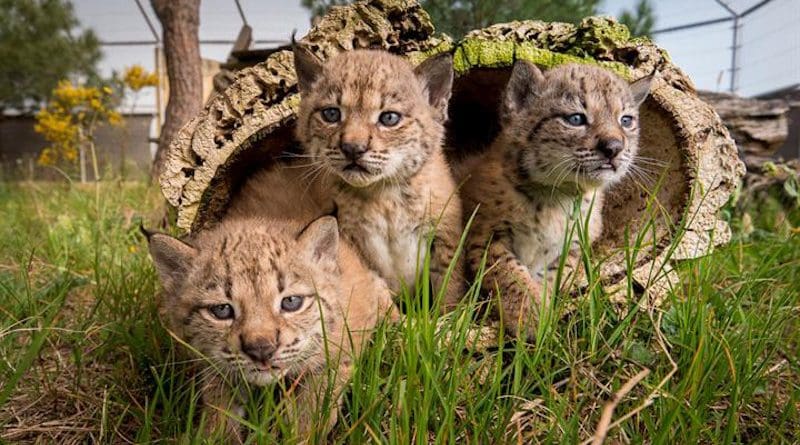Twenty-Three New Iberian Lynx Cubs Were Born In Breeding Centers Managed By National Parks
By Gita Bhatt*
To date, 238 Iberian lynx have been born in the centres managed by the National Parks Autonomous Agency (OAPN), of which 150 have been released into various parts of the Iberian Peninsula.
This year’s Iberian lynx breeding season ended with the birth of 23 new cubs in the breeding centres of El Acebuche, in the Doñana National Park (Huelva) and in Zarza de Granadilla (Cáceres), managed by the National Parks Autonomous Agency (OAPN), which reports to the Ministry for Ecological Transition and Demographic Challenge. Both complexes belong to the network of the Iberian Lynx Ex-situ Conservation Programme breeding centres in the Iberian Peninsula.
Among the Lynx pardinus born this season, there are fifteen males and eight females. Of these 23 cubs, 12 (10 males and 2 females born in four different litters) are from the Zarza de Granadilla facilities and the remaining 11 cubs (5 males and 6 females) are from the breeding centre located in the Doñana National Park, from four other litters.
The OAPN has been part of the Iberian Lynx ex-situ conservation programme since its inception. In fact, it was at the El Acebuche centre in Doñana, where the first litter of Iberian lynx bred in captivity was born. To date, 238 Iberian lynx have been born in centres managed by the OAPN, of which 150 have been released in different parts of the Iberian Peninsula where reintroduction and/or reinforcement of the species is being carried out.
Iberian lynx litters undergo an aggressive behaviour phase at around seven weeks of age, in which the cubs establish their hierarchy through aggression that can end with the death of one of them. At the moment, five of the eight litters have already passed this aggressive phase and the centres are confident that the remaining three can also successfully overcome it, to then begin their next phase of life, either to remain as breeders in the breeding centres or be prepared for release.
A total of 27 lynx have been released in 2021 as part of the Iberian Lynx breeding programme. Of the OAPN centres, four came from El Acebuche and five from Granadilla.
An all-time high for the species
The lynx working group, coordinated by the Ministry for Ecological Transition and Demographic Challenge, has offered the best assessment in two decades of the state of Iberian lynx populations in its latest report. As a result of joint Iberian lynx conservation efforts in recent years, the study shows that the lynx population in Spain and Portugal has reached 1,111 across both countries, according to data from 2020.
This is the highest number recorded since monitoring programmes were put in place for the species and is a very significant increase, considering that there were fewer than 100 counted in 2002, making it one of the most successful cat conservation programmes in the world.

